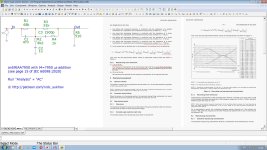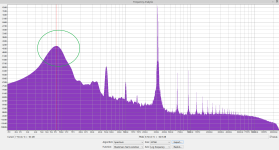Did you know that a time constant of 7950 µs has been mandatory for all phono preamplifiers since 2020 (clause 8.2.1 of the IEC 60098:2020 standard) in all CENELEC countries (Austria, Belgium, Bulgaria, Croatia, Cyprus, the Czech Republic, Denmark, Estonia, Finland, France, Germany, Greece, Hungary, Iceland, Ireland, Italy, Latvia, Lithuania, Luxembourg, Malta, the Netherlands, North Macedonia, Norway, Poland, Portugal, Romania, Serbia, Spain, Slovakia, Slovenia, Sweden, Switzerland, Turkey and the United Kingdom) ?
In the sense that Williamson-Lipschitz-Young-Russell with their "A High Accuracy Inverse RIAA Network" have not met the standard for five years now and are not metrologically acceptable !
I suggest to immediately replace all obsolete antiRIAA with my antiRIAA7950, which takes into account the time constant of 7950 µs and uses standard resistors and capacitors of the E24 series. You can also download the schematic file for Microcap12 here https://www.patreon.com/posts/masterklass-po-118530913
In the sense that Williamson-Lipschitz-Young-Russell with their "A High Accuracy Inverse RIAA Network" have not met the standard for five years now and are not metrologically acceptable !
I suggest to immediately replace all obsolete antiRIAA with my antiRIAA7950, which takes into account the time constant of 7950 µs and uses standard resistors and capacitors of the E24 series. You can also download the schematic file for Microcap12 here https://www.patreon.com/posts/masterklass-po-118530913
Attachments
Nick, the anti-RIAA should mimic the standard recording characteristic as per the paragraph 8.1.1. It defines 75us, 318us and 3180us time constants. No bass boost is defined. Why did you add a bass boost?
At playback, the standard defines the tolerance of the reproducing curve between 2 Hz and this 20 Hz cutoff: "at or below" the standard reproducing characteristic. Meaning that a phonograph preamplifier has to cut at 20 Hz with at least 6 dB/octave rate, or 12 dB/octave like many of us do. This is for suppressing playback rumble, and has nothing to do with recording equalization, which fortunately remained the same. No so-called Neumann-pole is mentioned, either.
Also interesting is 8.2.2. b) 20 Hz to 20 kHz: "No tolerances are specified for the frequency characteristic of the reproducing chain".
At playback, the standard defines the tolerance of the reproducing curve between 2 Hz and this 20 Hz cutoff: "at or below" the standard reproducing characteristic. Meaning that a phonograph preamplifier has to cut at 20 Hz with at least 6 dB/octave rate, or 12 dB/octave like many of us do. This is for suppressing playback rumble, and has nothing to do with recording equalization, which fortunately remained the same. No so-called Neumann-pole is mentioned, either.
Also interesting is 8.2.2. b) 20 Hz to 20 kHz: "No tolerances are specified for the frequency characteristic of the reproducing chain".
Hi Laszlo, I think he meant bass cut, 6db under 20 Hz, like rumble filter. Not bass boost.
Anyway, funny what regulations can bring upon people...
Anyway, funny what regulations can bring upon people...
According to Wikipedia, the IEC amendment to the RIAA playback curve was withdrawn in 2009. https://en.m.wikipedia.org/wiki/RIAA_equalization
Strange that it resurfaced 11 years later...
Strange that it resurfaced 11 years later...
Beware that the Wikipedia page erroneously states that the bass boost of RIAA replay equalisation exacerbates rumble etc. It doesn't. Most of RIAA equalisation is to correct for the velocity response of magnetic cartridges. If you used an amplitude transducer (optical or strain gauge), RIAA equalisation would become a 318us/75us shelf equaliser, plus (and please note this, manufacturers) a high-pass filter set to 3180us (50Hz). This is already a significant rumble filter, and is why people have been able to safely ignore the 7950us recommendation.
According to the standard, the "new" playback EQ defines a bass cut (high-pass) at 20 Hz, who knows why.Hi Laszlo, I think he meant bass cut, 6db under 20 Hz, like rumble filter. Not bass boost.
Anyway, funny what regulations can bring upon people...
The anti-RIAA is intended to realize a mirror image of the frequency response, to get flat output for flat input.. I just argued that the bass boost portion is not needed, because it is not present in the recording EQ.
The goal is to reduce effect of cartridge + tonearm resonance.

antiRIAA should mimic frequency response not of the recording , but of the playback . IEC 60098:2020 paragraph 8.2.1 . It is because we use antiRIAA with phono preamp, and not with a recording machine.Nick, the anti-RIAA should mimic the standard recording characteristic
Last edited:
The goal is to reduce effect of cartridge + tonearm resonance.
I'll stick with the 3 poles/zeroes of the old RIAA within the 20--20kHz range, and stick agressive high-pass subsonic filter below 20Hz to deal with resonances. Don't want that dub-reggae losing its bottom octave thank you...
If you know the frequency and quality factor of the resonance, you could make an inverse resonance filter (cover the complex poles with zeros). The disadvantage would be that the phono preamplifier would only work well for that specific combination of cartridge and tonearm.
The last time I looked at a reggae bass tone with an oscilloscope, it was about 60 Hz. It's decades ago, I don't remember what song it was.
Thanks to common sense, this cancellation was cancelled ;-) . PMA @ #8 definitely noted why. Wikipedia is for housewives, and the active IEC 60098 standard is for professional engineers.According to Wikipedia, the IEC amendment to the RIAA playback curve was withdrawn in 2009
Last edited:
see @ Fig.4 "Bruel-Kjaer-Audible-Effects-of-Mechanical-Resonances-in-Turntables-AN17-233-1977-1" [ https://www.patreon.com/file?h=97802586&m=273910079 ] [ https://www.patreon.com/posts/vazhno-po-povodu-97802586 ] most 6...12 Hz, +5...10 dB , - good approximation of IEC 60098 paragraph 8.2.2a and [ https://c10.patreonusercontent.com/...=JeeJbsV5FOvgDnj4MU5lzVg-J7-YckdJ5fxjyIofJB8=If you know the frequency and quality factor of the resonance
]
Last edited:
your dub-reggae will not lose anything, since the roll-off in accordance with 7950 µs compensates for approximately the same rise due to the mechanical resonance of the tonearm with the cartridgeDon't want that dub-reggae losing its bottom octave thank you...
Yeah, it has been a well known issue, for decades."Bruel-Kjaer-Audible-Effects-of-Mechanical-Resonances-in-Turntables-AN17-233-1977-1"
I would not suggest such solution. The nature of issue is not the steady state one, so the transient response of such filter is better not to imagine.If you know the frequency and quality factor of the resonance, you could make an inverse resonance filter (cover the complex poles with zeros).
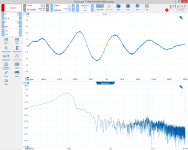
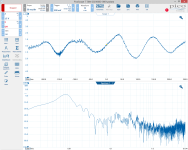

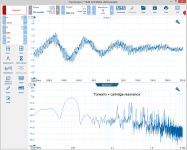

your dub-reggae will not lose anything, since the roll-off in accordance with 7950 µs compensates for approximately the same rise due to the mechanical resonance of the tonearm with the cartridge
Are they essentially trying to turn the resonance and the first-order roll-off together into a third-order Chebyshev high-pass alignment?
Not convinced that the rolloff compensates all that well for a fairly high Q resonance only one octave away. Better than nothing, I suppose, but not something that DIYers need to adopt, when a single stage phono equalizer with integral third order 16Hz HPF has recently been shown.
Slava Ukraini,
Chris
Slava Ukraini,
Chris
They make standards 😉 , and "non-compliance with the standard is punishable by law" © ;-) . To put it simply, I have nothing against 7950, and even vote with both hands for compensation of the typical +10 dB hump at 10 Hz, formed by a typical tonearm with a typical cartridge. Moreover, I do this by adding just one resistor and one capacitor @7950 uS to the my patented T-shaped general feedback RIAA circuit of the phono preamp [ https://imrad.com.ua/userdata/modul.../banner/cy-xxi-v-7-karta-naprug-jpgk4s5Eh.jpg ] , i.e. without adding active transistors or op amps and without noise penalties, as in >=2d-order rumble HPFs.Are they essentially trying to turn the resonance and the first-order roll-off together into a third-order Chebyshev high-pass alignment?
I like Marcel`s "one opamp phono preamp" with 3d-order rumble HPF @input , I did something similar in April 1979 [ https://archive.radio.ru/web/1979/04/062/ ], but I do not like its noise penalty and relative complexity. imho simplest 1st order 7950 RC is enough for tonearm antiresonance, and also to comply with the requirements of the active IEC 60098 standardintegral third order 16Hz HPF has recently been shown
Last edited:
- Home
- Source & Line
- Analogue Source
- antiRIAA7950
